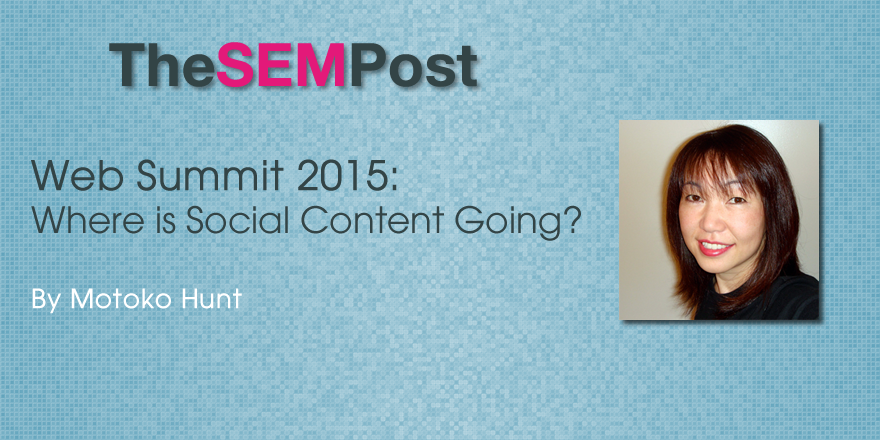 Last year, when I attended the Web Summit (Dublin, Ireland) for the first time, I was not fully aware of what was happening. The event was much bigger than I expected, and there were so many sessions going at the same time. The biggest challenge of all was that many stages were far apart from each other, you could not get to the next session in another area in time. With more than 30,000 people and hundreds of exhibitors, it felt like I was in some types of strange dream.
Last year, when I attended the Web Summit (Dublin, Ireland) for the first time, I was not fully aware of what was happening. The event was much bigger than I expected, and there were so many sessions going at the same time. The biggest challenge of all was that many stages were far apart from each other, you could not get to the next session in another area in time. With more than 30,000 people and hundreds of exhibitors, it felt like I was in some types of strange dream.
 This year, I was better prepared. By consulting an event app and a map of the venue, I was ready for Thomas Crampton (Global MD, Ogilvy & Mather) to appear on the Marketing Stage on day 1. He was going to talk about how gathering social media data and knowing how to use it effectively are two very different activities, and showing us how using data effectively could drive a brand’s online content strategy.
This year, I was better prepared. By consulting an event app and a map of the venue, I was ready for Thomas Crampton (Global MD, Ogilvy & Mather) to appear on the Marketing Stage on day 1. He was going to talk about how gathering social media data and knowing how to use it effectively are two very different activities, and showing us how using data effectively could drive a brand’s online content strategy.
First, he showed us a campaign video by Visit Britain targeting Chinese tourists. (https://www.youtube.com/watch?v=AdlEakyRLzU) The idea was to name tourist attractions in Great Britain as Chinese people describe them. It was probably more fun than the practicality, which of course became very popular on social media networks, resulting in a 27% increase in Chinese visitors. The campaign was a success in the way it made this far away country feel familiar and a bit closer to Chinese people.
Thomas stated that for self-preservation, people are retreating into smaller, private networks and blocking ads, while social platforms tighten their filtering algorithms. You can see the trend in data such as mobile messaging app usage growing by 316% year-on-year worldwide, and at the same time, the organic search in Facebook has declined by 50%.
Although the Internet, and the web, are making more content and information available, everyone is filtering more and actually seeing less. People only look at what they want, when they want it. According to Brightedge’s content engagement report (2015), 80% of B2C content goes unnoticed by consumers.
Thomas pointed out that Brands were challenged to break through the clutter.
- In order to maintain relevance and resonance at the speed of culture, brands must move from a marketing mindset to a publisher mindset.
- The great stories and experiences, and not superficial content, are what excite potential customers in the era of distraction.
- As customers are spoiled for choice and holding little loyalty, brands need to shift from aimless connections to meaningful conversations and advocacy to stay engaged and bonded with customers.
He offered the follow ways for brands to actualize the previous above points in order to break through the clutter:
- Transform brands to culturally relevant publishers
- Build brands through a strategic approach to content development and engagement
- Use data and social analytics to ensure strategies are brand-driven and audience-informed
- Use data to help brands connect naturally with the right audience in the right place at the right time
- Inspire customers through creative and effective culturally relevant storytelling and experiences
- Do things first or differently to be innovative
- Move to micro targeting at scale
- Focusing on revenue opportunities through customer bonding instead of community management
- Measure the success through relevant and harder business metrics such as leads, sales, and advocacy
It felt to me that the overall theme of this year’s Web Summit was about how you integrate “content”, “marketing (including search and social)”, and “data” to bring the success to the company by moving away from focusing each area separately. At the end of the day, it does not count if a win in different departments doesn’t translate to company’s success.